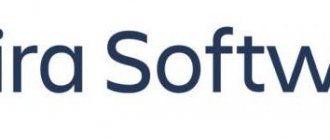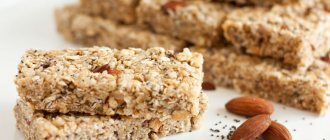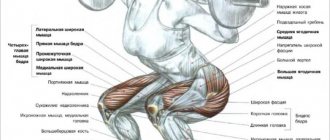The average adult spends hours a day at work—and that's at best. Emergency situations, deadlines, and preparation of important events can keep you in the office until late at night. At the same time, natural needs do not disappear anywhere - including the need for food. But how to eat at work so that the food is beneficial and saturates the body, without interfering with the work process? There are subtleties here that every person who wants to make their professional activity as productive as possible should know.
Diet
The timing of eating is important. All processes in the body (including digestive) obey a fairly strict schedule - biorhythm. It depends primarily on the time of day: its least activity is observed at night during sleep, the greatest - during the day, in the interval between 12-14 hours. Based on this, proper nutrition should be carried out according to the following regimen:
- 7-8 am – a hearty but not heavy breakfast, containing a lot of easily digestible proteins;
- 9-10 am – light snack (second breakfast), including liquid and carbohydrates, some protein and healthy fat;
- 12-13 hours – a hearty lunch consisting of proteins, “slow” carbohydrates and fats;
- 15-16 hours – second snack (afternoon snack), also based on liquid food;
- 18-19 hours - dinner, in which the emphasis is again on proteins.
The intervals between meals should not exceed 2-3 hours - this will help to avoid a drop in glucose levels and stagnation in the bile ducts. The body, getting used to a rationed and regular diet, stops storing reserves for a “rainy day” in the form of subcutaneous fat. In addition, a clear regime forms in it the mechanisms for the effective absorption of food - thanks to this, all consumed food goes to work and is not wasted.
Fractional meals
Throughout the day, the expert recommends 4 or 5 meals a day: breakfast, second breakfast, lunch, dinner.
If there is an afternoon snack between lunch and dinner, then dinner should be light. Distribute food throughout the day so that each main meal gives you a feeling of fullness for 3-4 hours.
If after eating you feel hungry within an hour, it means you either made yourself a small portion or ate the wrong foods.
Plan what and when you will eat. It is advisable that the interval between main meals, which is breakfast, lunch and dinner, be 5-6 hours.
What should be on the work menu?
For proper nutrition of an employee in the office, it is important not only when he eats, but also what exactly he eats. Not all products benefit the body, increase its activity and performance - many of them are frankly harmful to it. A healthy menu should include the following types of nutrients:
Carbohydrates. This is the main source of glucose, which provides the body with energy for work. Their sources are all starchy foods (cereals, pasta, flour products, potatoes, legumes), fruits and berries, as well as sweets. It is important to remember that there are 2 types of carbohydrates:
- complex (starch, dextrin) – often called “slow” due to longer absorption by the body;
- simple (sugar, fructose, glucose) - also called “fast” due to rapid decomposition in the gastrointestinal tract.
Both types of carbohydrates provide energy to a person, but they do it in different ways. Complex ones take longer to digest, so their calories are absorbed gradually. Simple ones are absorbed almost instantly (within 1-2 hours) and provide an “explosive” supply of energy.
Squirrels. This group of substances performs a “building” function in the body - it is proteins and their constituent amino acids that go towards the growth and strengthening of tissues. A lot of proteins are found in food of animal origin: meat, fish, seafood, milk and its processed products (kefir, cottage cheese, cheese, etc.). There are also many protein-containing plant foods - for example, legumes, various seeds, nuts, peanuts, and some types of algae.
Fats. They play the role of an energy depot (storage facility), also participate in cellular synthesis as a building material, and ensure the transfer of nutrients into cells. The body needs both solid (animal) fats and liquid (vegetable oils). Polyunsaturated fatty acids of the omega-3 and omega-6 groups are important for health. They are used by the body to produce biologically active substances - hormones, neurotransmitters, etc.
Cellulose. This is a group of complex carbohydrates (in particular, cellulose) that are not digested in the gastrointestinal tract. The role of fiber is to cleanse the intestines of digestive by-products, as well as to stimulate peristalsis. Its presence in food allows you to avoid such unpleasant phenomena as flatulence (accumulation of gases) and constipation - a frequent “companion” of sedentary office work.
In addition to these main groups of substances, proper nutrition should include vitamins, simple micro- and macroelements (iron, zinc, phosphorus, calcium, potassium, etc.), antioxidants, and enzymes. They are necessary for the normal course of biochemical processes - for example, bone formation, transmission of nerve signals, tissue growth, protection from oxidative stress.
How to eat healthy at work? Six simple rules
We eat to live, and we work, in general, for the same reason. But why do these two concepts—work and nutrition—so often come into insurmountable contradiction? When you hear the words “classic office dishes,” pictures float before your mind’s eye, one more harmful than the other: pizzas, chips, sandwiches... Giving a tiny head start in time, food in a hurry takes away much more: health, beauty, and, finally, the very pleasure of eating. Is it possible to change the situation or is it impossible to eat well at work by definition? And what career feats on an empty or sick stomach...
1. Eat breakfast yourself
The second question is whether you are going to share lunch with a friend (which, given the conditions of intense work, is not such a novelty) and give dinner to an enemy (or would you yourself be willing to be someone’s enemy if it guarantees a good evening meal). But breakfast, according to the unequivocal opinion of nutritionists, doctors and grandmothers, is the most important stage of daily eating. It is simply criminal to refuse it, because in the first hours after waking up, the body most of all needs a source of energy. What is important is that breakfast has time to be most fully absorbed, which means it can be enjoyed with a clear conscience.
generous portions of proteins and simple carbohydrates for breakfast.
- in the morning they will only do you good.
But don’t rush to fill your stomach with bread and sausage or chocolates: you can always indulge in a plate of oatmeal with fruit puree, a sandwich of whole grain bread with ham or cheese and green salad, cottage cheese with berries, a soft-boiled egg, muesli with kefir. Do not skip breakfast under the pretext of lack of time
: it is much more logical to wake up 15 minutes earlier and give the body what it needs than to get to work, fighting hunger nausea, and then scour the office for an hour in search of something to eat.
2. A firm “no” to bags and boxes
In the afternoon, blood sugar levels drop; this is human physiology. We feel a loss of energy and an irresistible desire to immediately chew something, which becomes more dramatic the less chance there is of a normal lunch. These tempting servings of sweet, salty and spicy in colorful pouches! They just beg and are eager to be bought, put in a drawer and hastily eaten without looking up from the monitor screen. Remember once and for all - this is not food, this is packaged gastritis
, obesity, damaged skin, depressed mood. All kinds of instant pasta soups, sausage sticks, sweet bars and cookies, dry mashed potatoes, chips - every office front fighter knows by sight the soldiers of this countless high-calorie army in noisy uniform. Their allies are chicken Kiev, ready-made salads with an incredible shelf life, pizzas in cellophane.
The strategy of these objects pretending to be food is to catch you on your last hungry breath and fill your stomach with bricks. And you know perfectly well how bad you will feel later, but you buy this crap again and again. Maybe it's time to stop?
Of course, none of us are immune from a sudden attack of hunger at work. In this case, keep in the table not “doshiraki”, but much healthier and quite shelf-stable products: muesli bars, apple chips and dried fruits (without sugar and dyes), nuts (not fried or salted), dry bread. These foods are rich in fiber and, even when consumed in small amounts, help you feel full quickly. Add a glass of delicious herbal tea or clean water to your snack, and your strength will be restored and the worm will be tired.
3. Attention, coffee
A strong, aromatic drink has become a symbol of the working atmosphere - it happens that an employee focused on a project automatically, without noticing, pours cup after cup into himself. Or a “coffee break” becomes a substitute for a well-deserved normal break
necessary for a complete meal. Three or four such pauses - and goodbye, an hour of working time that you can’t seem to afford to take out of your work schedule to take a break for lunch...
Coffee is not only a powerful stimulant, but also a diuretic. It removes precious fluid from the body; a dehydrated body experiences digestive problems, fatigue, and ages faster. In the afternoon, coffee is a real poison. It overstimulates the brain centers: if performance increases, it is not at all significant, but the load increases many times over. It is known that excessive coffee consumption leads to insomnia - you can’t sleep, then you can’t wake up and - a vicious circle! - drink cup after cup.
Of course, no one has the right to deprive you of a couple of coffee boosts early in the morning. But try not to reach for the coffee maker after two o'clock in the afternoon.
. Once you overcome a week of withdrawal symptoms, believe me, you will enjoy living without gallons of coffee.
4. A break means a break.
It is no coincidence that the lunch break is called that - both words are important, both about lunch and about pause. Eating at work without interrupting your work, especially regularly, is the worst thing you can afford. Even if the snack is modest and there is little time for it, be sure to change the environment. Take a walk on the street, go to another department, or even sit on the windowsill of an open window. Unloading your head during a break is no less important than loading your stomach.
5. Cook yourself
Even if you've never done this, it's never too late to start - cook your own lunches and take them with you. This way you will always be sure that you eat well and properly at work.
It's not as time-consuming as it might seem
: You can either use special containers and freeze daily portions to heat them up at work, or prepare foods every few days that can be eaten cold - roast beef, salad with boiled chicken breast or shrimp, salads with pasta and vegetables, pita rolls with greens and ham. Puree soup, which will take you a maximum of an hour to prepare a saucepan once a week, can be easily heated by pouring it into a mug and placing it in a container with boiling water (if, God forbid, you don’t have a microwave at work). Paired with a sandwich (or a light, open-faced pie, which can also be baked over the weekend and then divided into slices and wrapped in foil for long-lasting freshness), it makes a great lunch. Take peeled and chopped vegetables with you - celery, carrots, paprika, cucumbers. They are especially pleasant to crunch on at the end of the working day, when there is no need for high-calorie food, but you want to chew.
6. Business lunch on a first-come, first-served basis
It is clear that everyone has different luck with work. Some organizations have full-fledged canteens, some have kitchens with a refrigerator and a microwave, and in some, the concern for employee nutrition is limited to an ancient kettle in the corner. Business lunches, which today are offered by almost all catering establishments at lunchtime, despite their compactness, require a significant investment of time and, if visited regularly, cost a pretty penny. But this does not mean that they should be unequivocally abandoned. A delicious business lunch in a restaurant that you like is a small, pleasant service to yourself that will brighten up your workdays. Go to a business lunch, for example, once a week - it won’t ruin you, but it will lift your spirits and at least from time to time provide you with a full three-course meal.
If you have the opportunity to have a snack at a bistro, ordering from the menu, choose dishes that bring maximum benefit to your busy body: fresh salads, fish, beans, offal, vegetables, dairy, pasta with a light sauce, sushi. You can even get a serving of vegetable salad or light chicken salad at a fast food restaurant.
. Avoid hearty dishes of potatoes with sauce, fatty meat dishes - the body will use all its reserves to digest them, and instead of labor feats you will be drawn to sleep. Pre-meal with a glass of water will help you feel full faster without overeating.
What to eat at work?
If you want to switch to healthy eating in the office, but don't know what specific foods to start with, here are some simple examples:
- for the first snack before lunch, you can eat a handful of nuts or dried fruits (dried apricots, raisins, dried dates), 1-2 fresh fruits (apple, avocado), drink a glass of milk or yogurt;
- for lunch you can eat hot or cold soup (borscht, okroshka, rassolnik, etc.), mashed potatoes with boiled beef or chicken, salad of fresh vegetables and herbs (parsley, lettuce, dill), rice with baked fish;
- For an afternoon snack, whole grain bread, a little low-fat cottage cheese, a glass of whole or ground berries, seasonal fruits, green tea, fruit juice or fresh juice are perfect.
The main thing to remember regarding office nutrition is that lunch should make up 50% of your daily calorie intake. The remaining 50% should be distributed among breakfast, dinner and snacks.
Distribute your daily diet in proportion to the norms of each meal
As the expert says, the most optimal distribution of food products in percentage terms is as follows:
– 20-25% – for breakfast. A mandatory meal that should never be skipped. It doesn't have to be at 7 am, you can take food with you to the office. The optimal time for breakfast is before 9.00.
– 40-45% – for lunch. For main meals, it is better to use meat, fish, poultry, eggs, legumes, adding vegetables and cereals to them.
And for snacks, use, for example, fruits and dairy products. But all this should be thought out and distributed as convenient for you.
There is no one formula for everyone.
Snacks, for example, can be different.
Fruit or pita bread with salad, cheese and tomato juice.
It depends on how you ate your main meal and how much time you have until the next one. The later you eat, the lighter the meal should be.
– 20-25% – for dinner. This is a meal that should be as easy as possible and should not take much time to prepare.
It is advisable to have dinner no later than 20.00 (4 hours before bedtime) so that the food is sufficiently digested and there is no feeling of discomfort.
– 5-20% – for snacks. Between main meals you need to have 1-2 snacks. And don't forget to drink water - it is important for metabolism.
Recommendations
Catering in the office involves following a number of simple rules that will improve its quality:
- eating should be done quickly, but leisurely - otherwise the body will experience stress, and the quality of food absorption will noticeably decrease;
- while eating, you need to exclude distractions - first of all, work itself, reading, watching videos on the Internet, etc.;
- It is better to have lunch in a specially designated room so as not to be distracted and not to irritate your working colleagues;
- If you prepare office lunch yourself, do not make it too fragrant - a strong smell will not benefit the work environment.
If you do not have the opportunity to prepare your own lunch and snacks for work, you can use the menu of our LUNCHBERY online service. It has a whole range of healthy and nutritious dishes - side dishes, soups, salads, snacks, drinks, etc. All food is prepared from fresh ingredients and undergoes three-level quality testing, and is packaged in individual and convenient packaging.
Fast food at work: common mistakes
For seemingly insignificant nutritional mistakes at work, we pay with our health, well-being, and energy.
We list the most common mistakes:
- skipped breakfast;
- a bun or cookies instead of fruits and vegetables;
- binge eating;
- lack of fermented milk products in the diet;
- improper distribution of food nutrition;
- lack of water and large amounts of meat;
- consumption of fast foods and semi-finished products.
If you organize your meals according to our recommendations, you will always be in a great mood, and on weekends you will have enough energy to do your homework.
Lunch according to staff schedule
Refusal to take a full lunch break is not a sign of hard work, but a direct violation of labor laws. Therefore, lunch in the office should be mandatory for all employees, without exception: from the director to junior staff. Although the legislation does not insist, but only recommends the organization or production of rational nutrition for the team, competent management of many enterprises has already taken care of the delivery of lunches to the office.
A good employee, focused on quality customer service, on negotiations or preparing a report, is able to perform his duties for a long time only on adrenaline. The desire to be indispensable, the fear of losing a job or forced savings forces many employees to give up proper nutrition in favor of work. But a reasonable boss knows that the path to success also lies through the stomach: a well-fed and healthy employee will perform his tasks more efficiently, is less susceptible to illness, adheres to the schedule, is not late from his lunch break and does not try to go home for dinner early. Thanks to the clarity and accuracy of schedule implementation, both discipline and dedication of employees of any organization will improve
Lunch delivered to the office at the appointed time, freshly prepared, tasty and healthy, will significantly increase employee motivation. Such a lunch break will become one of the foundations for building the corporate culture of the enterprise, which will set the staff up to work much more productively
Timely delivery of lunches to the office will help unite the team, foster a culture of proper nutrition, and rationally allocate time for eating and rest.











